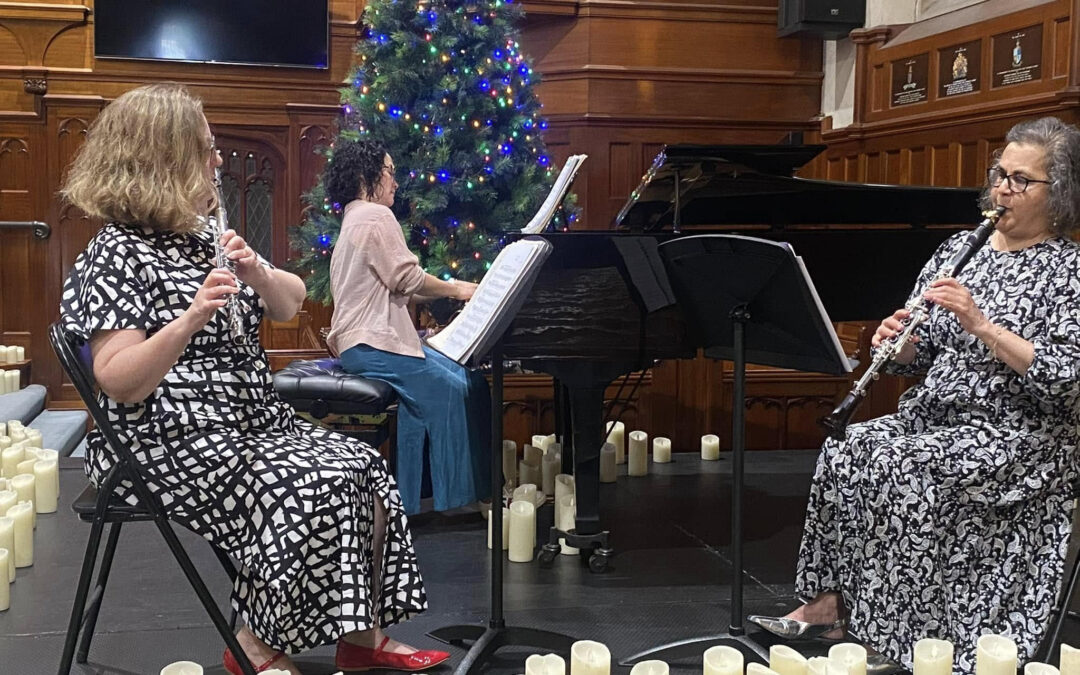Due to unforeseen circumstances, I couldn’t make it to the Sydney Opera House Concert Hall. However, thanks to the ABC Classic media partner, I was still able to listen to this fantastic concert, with the benefit of commentaries by Vanessa Hughes which brought the choirs to life.
The inaugural Gondwana World Choral Festival has been an enormous success, bringing no less than 8 choirs from around the world as well as across the vast reaches of Australia; making Sydney the choral capital for this festival. Each choir offered something from their homelands and it was clear that they were united by their love of singing.
One musical element particularly stood out when I listened to this concert: the harmonic interval known as the open fifth. Considered as the simplest harmony, it has been the thread that linked each choir to its counterpart, across the vast geographical distance.
First up was TIARA, Riga Cathedral Girls’ Choir who opened the concert with two Latvian folksongs. The girls wore white, floor-length dresses which must have been a refreshing sight for the Sydney audience who usually see choirs in black attire. Their soaring voices in the opening chord of The star passes over us dispersed and crystallised into bell-like tones reminiscent of a Christmas carol. Their second piece, Rain Prayers, showcased their outstanding mastery of pitch and rhythm. In what would become a pattern with other choirs, they were accompanied on the piano and percussion.

TIARA, Riga Cathedral Girls’ Choir © Robert Catto, 21 July, 2019
They were followed by the Nagoya Children’s Chorus from Japan who sung a traditional Japanese folk song: the Chief of Sodah Village. It presented elements such as pentatonic harmonics, percussive technique and even speech. It was a more fluid sound than their Latvian counterpart. But before the piece ended, it became a lot more jazzy, with syncopated rhythmic pattern and ornamentation. Their second piece, in turn, was accompanied by a long-necked lute and a cattle drum. This piece had even more of the village atmosphere: a simple tune in the centre of complicated rhythms which sometimes morphed into pitched speech. They were definitely outstanding for their age.

Nagoya Children’s Chorus © Robert Catto, 21 July, 2019
The Boston Children’s Chorus came in with a spiritual song in full harmony: Ain’t Gonna Let Nobody Turn me Round. This was the first chorus with mature-voiced boys and they took advantage of their SATB capacity to the fullest. The notes from the boys in the second piece, My hearts be brave was true and rich, a great pleasure to listen to in the subdued tapestry of four-part harmony and beautiful poetry of the piece. In contrast, their last spiritual, Joshua, an old favourite of all youth choirs, was elaborate, tricky and deftly executed. It was a great chance for some of their soloists, including a young male voice to shine.

Boston Children’s Chorus © Robert Catto, 21 July, 2019
France’s La Cigale de Lyon treble choir was known for how they move and sing. Their first piece, Against Dreams and Quiet Tears was an aural journey from the lusciousness of Debussy’s harmony to the percussive sound scape of Stravinsky. It opened with atmospheric sounds of hissing and sirens. A lone voice held the note like a rock, whilst the chords moved around it. The harmony was built on the open fourth and fifth intervals, but it created a very different effect from the Japanese traditional style. They made marching sounds on the stage, which sped up as it reached the musical climax before resolving back to the melancholic opening. Their second offering, ironically was about how dancing was irritating. It was a piece reminiscent of many 20th Century French composers. Though they were singing unconducted, they were very well sung despite the difficult and syncopated rhythm.

La Cigale de Lyon © Robert Catto 21 July, 2019
If I had to choose a stand-out, the Guangdong Experimental Middle School Choir would have come close to the top. Their performance of a contemporary piece inspired by the Yi folksong tradition opened with a sinuous male voice, in traditional Chinese tonality, but the accompanying chords were clearly of Western influence. The verse burst in SATB tradition. The music coalesced into a motivic chorus, punctuated by bells and bols. The second piece, Spring is Coming, showcased a pure soprano solo, also with a hint of Chinese traditional style. The piece was full of lush harmony which transformed into a percussive and joyful mood, accompanied by the drum and tambourine.

Guangdong Experimental Middle School Choir © Robert Catto, 21 July, 2019
The Sound of Earth, sung by the Inner Mongolian Youth Choir opened the second half of the concert. It began with distinctive throat singing, done by a pair of choristers and echoed by another pair in a lower register. Wearing the colours of blues, whites and yellow, the choristers were an excellent example of blending. Much of the music was in pure open fifths, accompanied by a plucked instrument in an ostinato. “The Gods will come and save the Earth” but the singers think it will take a great deal of effort from us to do that.

Inner Mongolian Youth Choir © Robert Catto, 21 July, 2019
The Estonian TV Girls’ Choir followed with the Forging of Sampo: a mythical weapon in Finish mythology. Their conductor accompanied them on a tuned anvil and one of the choristers also played a hand drum. The choir has a very distinctive delineation between soprano and alto, creating a layered effects out of the pure octave intervals and counter-leaps that predominated this piece.

Estonian TV Girls’ Choir © Robert Catto, 21 July, 2019
Australia and Canada’s shared ocean was a powerful tie for the Toronto Children’s Chorus, who had been touring the Antipodes in the previous three and a half weeks. Their first piece, Ave Regina Coelorum was an intricate swirl of chants and whole-tone scale, held together by the piano accompaniment. For their second piece, they sang an extract of our own Paul Stanhope’s Jandamara: “This is our home”. Once again, the piano was joined by the drum.

Toronto Children’s Chorus © Robert Catto, 21 July, 2019
The concert culminated with two joint items which filled every nook and cranny of the Concert Hall with choristers. Conductor Lyn Williams, who had just been nominated for the 2019 Art Music Award for her significant contribution to the choral music in Australia, invited the audience to join the choristers for Dan Walker‘s piece Arafura, which described the beauty the Arnhem land of Australia’s North. They were also joined by virtuosic didjeridu player William Barton. Even through the headphones, I felt how overwhelmingly beautiful it was.

© Robert Catto, 21 July, 2019
Closing the concert once and for all was Christopher Gordon’s Peace on Earth. Combining the texts in Arabic, Latin, English and Indigenous language, the choirs sang “good dreams come to the people of Mother Earth. Peace on earth, goodwill to us.” At times percussive and loud, and at others seraphic and gentle, it was a fitting finale for a concert which showcased so much energy, diversity and excellence from outstanding young musicians.
This week, Sydney has truly become the choral capital of Australia. As the concert showed, it has been something to be proud of, and an experience to be repeated in a not-too-distant future.
Catch the concert on ABC Listen Again for hours of inspiration.

© Robert Catto, 21 July, 2019
Thoughts about:
![]()
Gondwana World Choral Festival 2019: Sounds of the World | Sydney | Sun 21 July, 2019
![]()





























